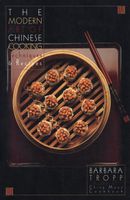Advertisement
Lard
猪油 mandarin: jew-yo; Cantonese: jyew-yao
Appears in
Published 1982
This in my kitchen means the pure white, firm, unseasoned, and odorless fresh fat from the back of the pig. In butcher shops you should ask for fat back or fresh pork fat, which the butcher will often sell you gratis. If you have difficulty locating a source, ask a friend or call a specialty shop that makes pâté, for lard is a staple in any kitchen where it is made. For smaller amounts, trim the pure white fat from a pork chop. Do not use salt back or salt pork, which are seasoned.
Lard was the traditional cooking fat of China and was used for both deep-frying and stir-frying. It is the reason why you find, in many of the old Chinese cookbooks, the stem admonishment to eat a dish up because it will not be good cold. One of lard’s disadvantages (to counter the wonderful crispness and flavor it imparts) is that unlike vegetable oils, it congeals and is unappetizing when cold.


